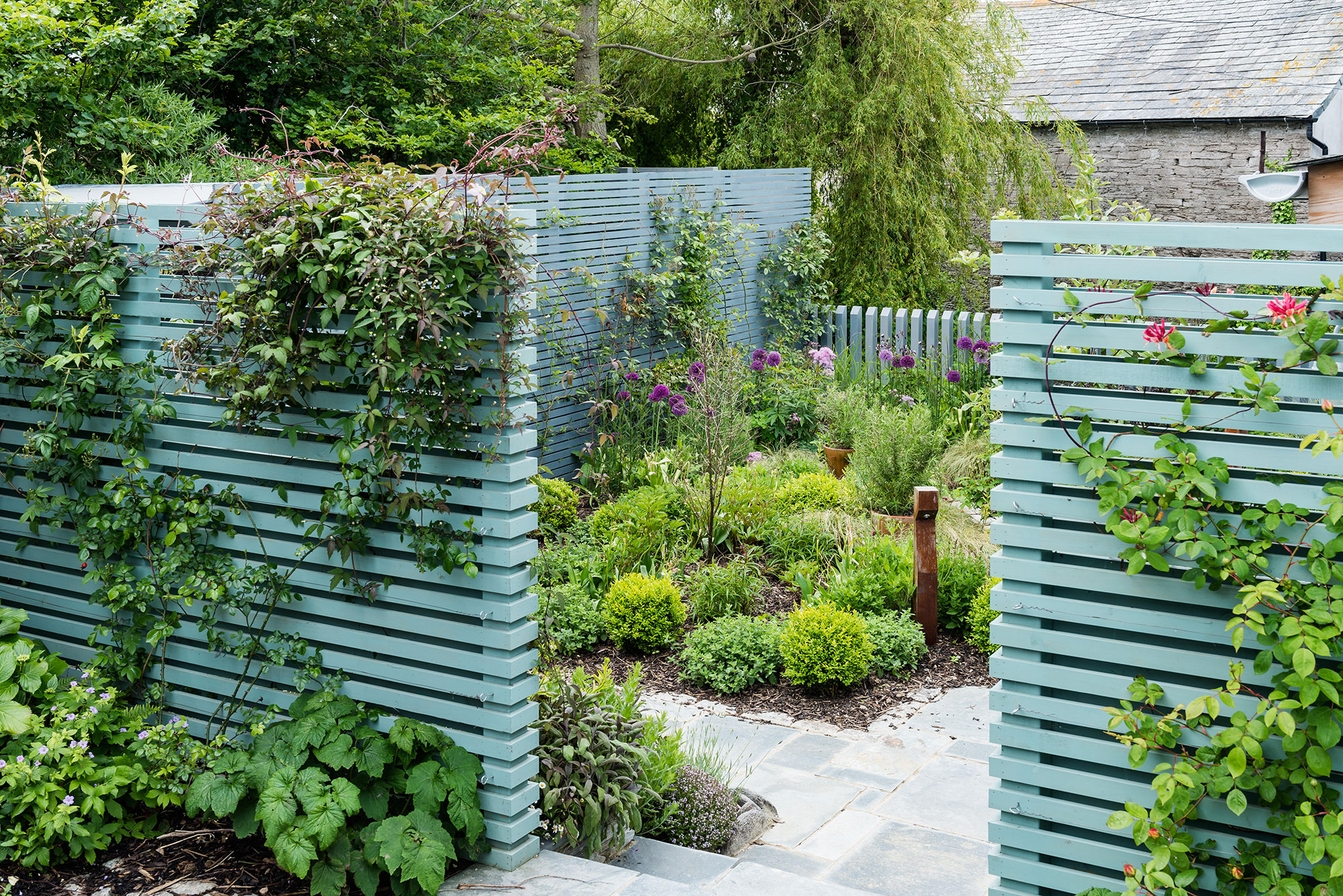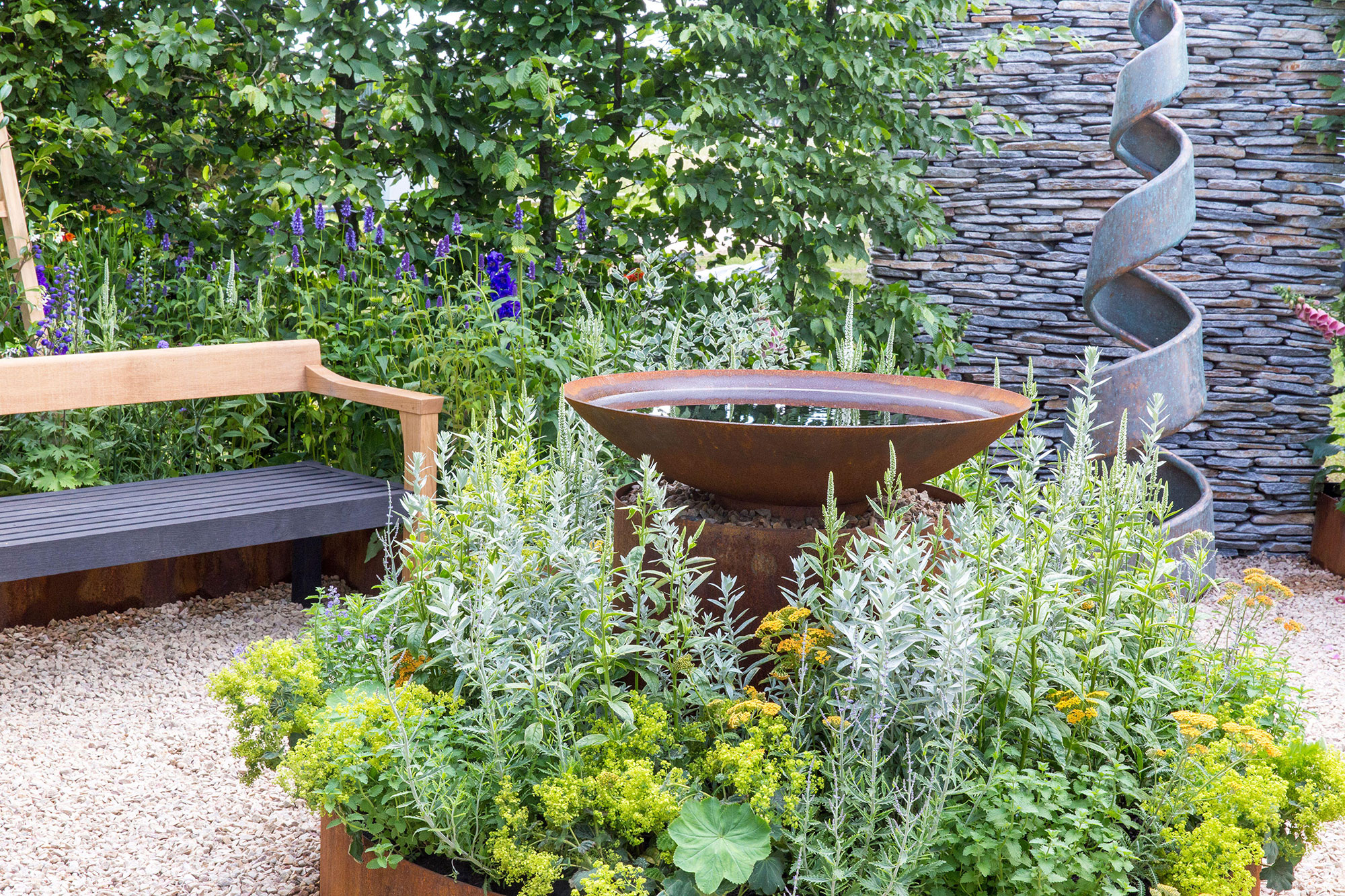
When it comes to gardening, not all soil is created equal. You might have lived up until now unaware of what topsoil is and the benefits it has for our garden as a natural fertilizer, but it's not a one-size-fits-all approach to filling pots or flower beds.
Topsoil might be good for some elements of your modern garden, but there are some instances where it can actually cause more harm than good, and it's important to give our garden a little extra care to ensure it is getting all the essential nutrients it needs to stay healthy.
So, take a look at what our experts have to say about topsoil and see if you're using it in the right places, if at all.
What is topsoil?

First things first - what exactly is topsoil? ‘Topsoil is the uppermost layer of the earth's surface, typically the first two to eight inches,’ says expert gardener Tony O'Neill, ‘it's where you'll find the highest concentration of organic matter and microorganisms.’
However this nutrient-dense substance is not automatically there, and actually takes a considerable amount of time to form. ‘On average, it takes about 500 years for nature to create just 1 inch of topsoil,’ explains Brock Ingham, editor of Bigger Garden. ‘This slow formation process involves the gradual decomposition of organic matter, weathering of rocks, and the activity of various organisms.’
This much-desired resource is also scarce for another reason. It is being rapidly depleted due to our modern-day gardening and farming techniques. ‘Deforestation, intensive agriculture, and improper land management practices can accelerate topsoil erosion and depletion, which can have detrimental effects on ecosystems and food production,’ says Brock. As a result of this depletion farmers have become reliant on chemical fertilizers to do the job top soil once did and achieve good growing results. Brock urges us to appreciate the importance of topsoil and look to rebuild it, saying: ‘It’s as important as ever to rebuild this "black gold" as much as we can for future generations for years to come.’
Why is it good for your garden?
The benefits of topsoil are many, so get a notebook and pen, you are going to want to remember this. Overall it helps to improve the key elements of plant health but it does this in a multitude of different ways, as out experts explain. ‘Topsoil is often used to provide a fertile and supportive environment for their initial growth,’ says Brock. ‘It helps establish a healthy root system and aids in nutrient uptake. But it can also be used in the case of established plants, for replenishing nutrients, improving soil quality, or filling in gaps where soil may have eroded or been removed.’
Topsoil is packed full of essential nutrients necessary for growing healthy plants, such as nitrogen, phosphorus, potassium, and micronutrients. Unlike your average fertilizer these are all naturally occurring. ‘Topsoil contains a significant amount of organic matter, including decomposed plant and animal residues. This organic matter improves soil structure, enhances moisture retention capacity, and promotes beneficial microbial activity,’ he explains.
Not only does it aid young plants in their initial growth, it also improves soil structure and water retention and drainage. Further helping to establish strong plants. ‘Knowing when to use topsoil is crucial,’ says Tony, ‘adding topsoil can be an excellent solution if your soil is poor in quality, lacks organic matter, or is heavily compacted. Similarly, if you're starting a new garden or restoring a worn-out lawn, topsoil will give your plants the nutrient-rich environment they need to thrive.’
When should I use topsoil?
Topsoil’s benefits are plentiful, and as a result so are its uses. It can help with a wide range of things from average gardening to full blown landscaping. It can be difficult to know where to begin with so much choice. Take a look over these suggestions from the experts and discover the benefits topsoil could bring to your space.
‘Topsoil is rich in nutrients, making it the most fertile type of soil. It is generally used when establishing new gardens, lawns, or landscapes,’ says Stephen Sullivan editor at the Plant Native. ‘It is particularly beneficial in areas with poor soil quality,’ he says. Tony from simplifying gardening echoes this, ‘it's a primary component when creating new flower beds, filling in holes, or levelling your lawn. You can also use it to improve the nutrient content in areas where you plan to grow demanding crops.’
Another use for topsoil in when you need to improve drainage. As previously mentioned due to the improved soil structure and water retention topsoil drains effectively whilst facilitating nutrient uptake and supporting various physiological processes. ‘Because topsoil drains so efficiently, the more you add, the better your grass or plant bed drainage will be,’ advises Izzy Goldberg, a Landscaper at White Maple Landscaping.
‘Mix topsoil into the area where you intend to plant for the optimum drainage, then add another layer of topsoil on top.’ Your dehydrated plants will thank you for this one.
When shouldn't I use topsoil?
Despite all its benefits, there are a few situations in which topsoil is not the appropriate choice and may do more harm than good. ‘One time you shouldn't use topsoil is when you're creating a specialized planting environment that requires specific soil compositions or conditions,’ says Dan Bailey, president of WikiLawn. ‘Certain plants have unique soil requirements, such as acidic soil for blueberry bushes or well-drained sandy soil for succulents. In such cases, using topsoil may not be suitable because it might not provide the optimal conditions or nutrients needed for the specific plant,’ he says.
Other plants that are hindered by topsoil include epiphytic and aquatic plants. ‘Epiphytic plants, such as certain orchids, naturally obtain nutrients from the air, rain, or debris that accumulates around them. These plants typically do not require traditional topsoil for growth and can be harmed by the added moisture and water retention that topsoil provides,’ says Brock Igham from the bigger garden. ‘Plants that grow primarily in water, such as water lilies or water hyacinths, have adapted to aquatic environments and do not require topsoil for their growth. Instead, skip the topsoil and focus more on your water PH.’
Topsoil is not always appropriate or necessary. You might want to reconsider using it where you already have adequate soil quality or in areas prone to waterlogging as this could worsen the issue. Similarly, you should consider using the best potting mix for containers when dealing with potted plants.
‘One situation where the use of topsoil may not be appropriate is in areas where native plants thrive,’ says Stephan, ‘introducing topsoil may disrupt the natural ecosystem.’ Topsoil is often sourced from multiple locations, meaning it can contain invasive species that could contaminate your garden. Keep this in mind when introducing topsoil to areas of your garden with particularly sensitive native plants live.







